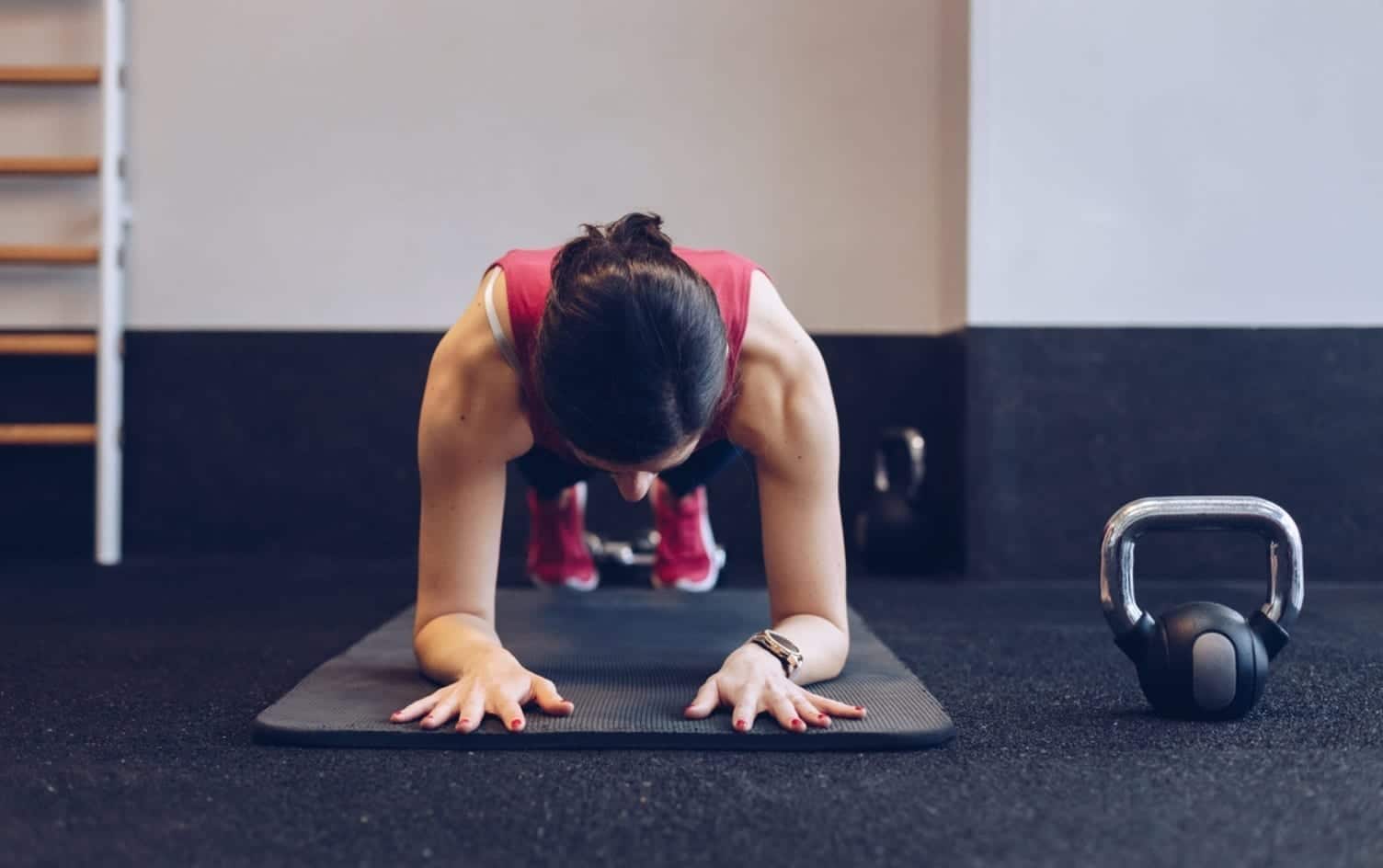If you’ve ever taken on a plank challenge, chances are you measured your success in seconds, and the longer you could hold your plank, the better. After all, that’s how the Guinness Book of World Records tracks its plank record, and Dana Glowacka may have just broken the women’s record with a stunning 4-hour, 20-minute hold. But unless you’re aiming to steal the crown from Glowacka (or Mao Weidong, who holds the men’s record with an 8 hour, 1 minute hold), you might be better off with short planks when it comes to increasing your core strength.
“Planking is about the proper form, muscle engagement and mind-muscle connection — not bragging rights for the most time spent holding a plank,” says Branko Teodorovic, a certified personal trainer, master trainer at FlexIt, and two-time World Fitness Federation (WFF) bodybuilding world champion. “Performing good planks is about quality time under tension, not simply time.”
While holding a long plank can certainly help you gauge your fitness level, it’s not essential for building strong abs — and it may even hurt your progress. Here, we explain the exercise science behind the plank paradox and how shorter (Read: easier!) sets of planks can help you strengthen your ab muscles and boost your athletic performance.
WHAT’S THE PLANK PARADOX?
Put simply, the longer you hold your plank, the less payoff you might get. “While changes can vary by individual, holding a plank for as long as possible may actually create a bell curve of diminished returns for the time spent,” says Jennifer Novak, a certified strength and conditioning specialist and owner of PEAK Symmetry Performance Strategies in Atlanta, Georgia.
When you contract your muscles continuously to fatigue (as in, until you collapse because you can’t hold your plank position anymore), you can trigger a phenomenon called central fatigue. Basically, your brain says ‘enough’ and slows down or shuts off the ‘go’ signal messaging your muscles to contract, explains Novak. If this happens, your muscle capacity to generate the force required for a dynamic movement (such as tightening your abs when you whack a tennis ball or swing a golf club) might be reduced.
WHY SHORT PLANKS BEAT LONG PLANKS
“Shorter sets of planks with rest in between allow your muscles to recover between sets, while maintaining the increased firing rate (your brain’s ‘go’ signal for muscle contraction) created by your plank hold,” says Novak. “This is why shorter-length planks in sets might be more advantageous than longer-length planks for creating a positive environment for on-demand contractions of your abdominal wall structures.” Snapping in and out of brief planks repeatedly is a form of functional training which reminds your neuromuscular system of what your abs are designed to do, strengthening your mind-muscle connection.
THE SHORT PLANK FIX
Instead of making every ab workout a test of your ultimate strength, get smart with a speedy series of short planks. Rather than holding your plank until you’re exhausted, aim to stimulate your abs for about 5–30 seconds, then take a rest period for your brain to regroup before reinforcing the move by repetition, suggests Novak.
“If you’re planking with a friend, do not try to ‘outplank’ them,” advises Teodorovic. “Instead, watch each other’s form and increase the quality.” To check for proper planking form, make sure your torso is aligned with the ground at a 90-degree angle from your arms and your head is in a neutral position in line with your torso, he says.
Beyond this, remember: Strengthening your core involves far more than just your ab muscles — you’ve also got to target your back, diaphragm and pelvic floor muscles. That’s where plank variations are essential for toned, responsive muscles overall, says Novak. For the best results, opt for an abs circuit workout where you can engage different core muscles at different angles, suggests Teodorovic. To get started, make sure your planking form is correct and then try a 14-day plank plan. Next, level up with a 4-week core strength plan.




